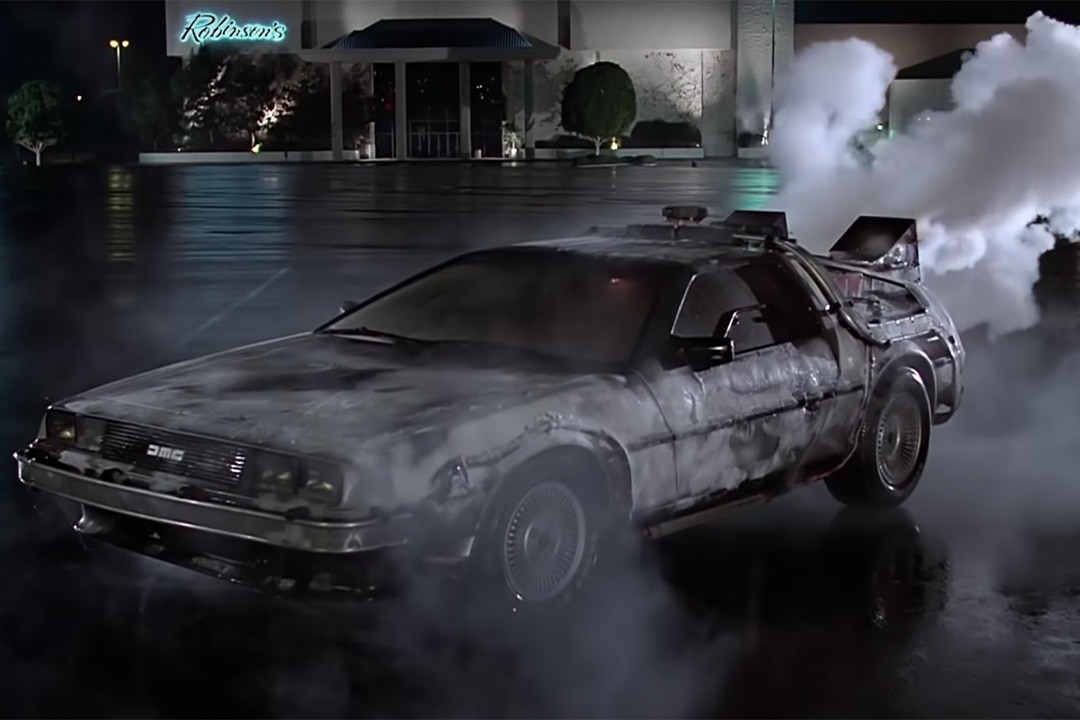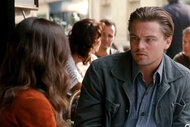Create a free profile to get unlimited access to exclusive videos, sweepstakes, and more!
How Doc Brown's Iconic Back to the Future DeLorean Time Machine Changed in Development
It took a village to send Marty McFly back to 1955.

It took a village to send Marty McFly (Michael J. Fox) back to 1955. Chatting with SYFY WIRE over Zoom, Back to the Future storyboard artist and concept designer Andrew Probert recalled the iterative creative process that shaped the Uber-iconic DeLorean time machine featured in Robert Zemeckis and Bob Gale's sci-fi classic (the complete trilogy is now streaming on Peacock).
Fans are probably aware of the fact that the time machine began life as a refrigerator before it was changed to a car. But were any other vehicle types considered once this tweak came down the pipeline? "It was a DeLorean right from the get-go," Probert said. Nevertheless, Gale had to rebuff offers from major automotive companies hoping to get their brand in a Steven Spielberg-produced blockbuster.
"There was this guy working at the studio, who was in charge of trying to get product placement for the picture," Probert continued. "He came to Bob and said, ‘Bob, I've got a great deal from Ford Motor Company if Doc Brown uses a Mustang instead of a DeLorean.’ Gale looked at the kid and said, ‘Doc Brown does not drive a f***ing Mustang.’"
How Back to the Future designed its iconic DeLorean time machine
The look of the temporally-displaced DeLorean began with a number of early sketches from the legendary Ron Cobb, who passed away in September 2020 at the age of 83. "He designed the car in what seemed like just a week," Probert said. "He was so fast and so good."
Probert was also asked to submit an interpretation of the car, with his interior leaning more toward an "industrial design" that had the iconic flux capacitor "as a long energy device" running along the ceiling of the car.
"Because it would have been much easier for Doc Brown to say, ‘This is what makes time travel possible,'" he noted. "Putting it behind him, between the seats, the camera would not be able to see it while he was pointing at it, as verified by the fact that they had to actually cut to an insert shot of the flux capacitor. Mine would have [allowed for] a tilt up, to be able to see the flux capacitor glowing."
Per the official BTTF website, it was neither Cobb nor Probert who came up with the final look of the flux capacitor — it was actually Special Effects Consultant Michael Fink, who also helped come up with the name. For context, Cobb proposed having the capacitor on the roof of the vehicle.
Cobb's interior, on the other hand, proved to be a better reflection of the pell-mell, on-the-fly invention style employed by Doc Brown (Christopher Lloyd). "Ron's was designed like a professor went to a parts store and bought stuff secondhand, which is so much more true to the feeling of the show," Probert continued. "Ron was was so totally intuitive when it came to matters like that and my hat's off to him, always."
Cobb then had to move on to other commitments, which meant the job of rounding out the rough edges fell to Probert. His Wikipedia page says as much: "In 1984, he worked on Back to the Future, initially drawing storyboards but then continuing the design of the DeLorean time machine that had been started by Ron Cobb."
"The producers weren't absolutely sold on what he gave them and wanted me to change it a little bit," he told us. "They gave me some requirements and then I added my take on it, and that's the car that they shot. So that's what it means, basically, by my finishing the design."
Those "requirements" mainly concerned the exterior of the DeLorean, which Probert originally sketched with "a small radar dish on top like you would see on a yacht, which they did not want," he admitted. When it came to refining Cobb's design, though, the producers asked for dual cooling vents flanking the car's nuclear reactor, in the vein of a Mad Max-style, jerry-rigged vehicle.
"I gave them a redesign on the atomic reactor," Probert concluded. "Ron's was actually circular, but it was off to one side. So I centered it, gave it a different look, added a second vent, and then rearranged the flux emission bands around the car to what I thought covered the car a little better than what Ron had. Enveloping the car a little better in my opinion. That was basically it."
The complete Back to the Future trilogy is now streaming on Peacock.
Originally published Nov 17, 2023.



























